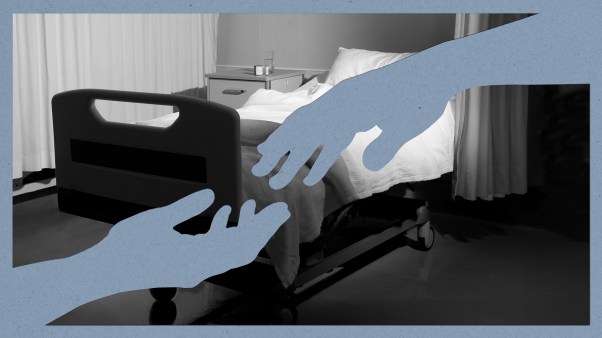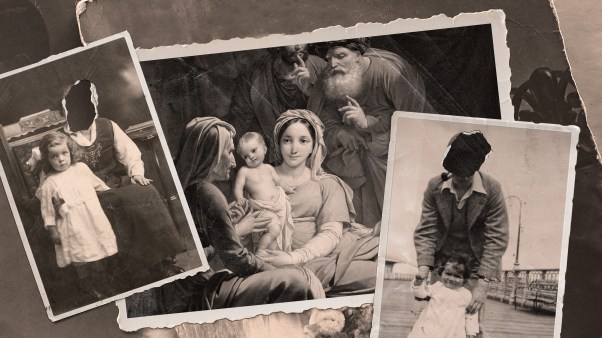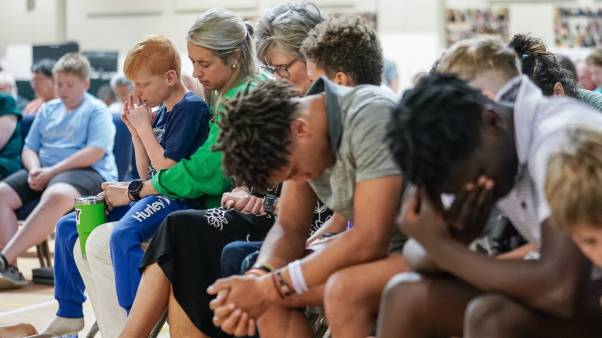Internal disagreements may threaten the prolife movement’s ability to seize new opportunities.
Differences over style and strategy have long plagued prolifers, but in the wake of the Supreme Court’s Webster decision allowing states more say on abortion, those differences have become more of an issue than ever before. In the view of a growing number of activists within the prolife movement, the biggest challenge of 1990 may not be the strength and financing of abortion-rights groups, but rather internal divisions within their own movement.
The Rape/Incest Question
One of the touchiest matters is whether to allow legal abortions in cases of rape or incest. As a matter of official policy, all the major prolife groups engaged in political activism oppose abortion in those cases. However, on the practical level, some prolife groups are willing to make concessions.
The issue threatened to boil over last fall when Congress approved a measure that would have allowed federal abortion funds for victims of rape and incest. The language of the amendment was so vague that many prolifers feared it could be broadly interpreted to pay for virtually all abortions. In an attempt to turn that back, the National Right to Life Committee (NRLC) began work on a compromise measure that would have strictly defined “rape” and “incest” and mandated “prompt reporting” of the incidents.
When word of this circulated among prolifers, some groups were horrified. The Ad Hoc Committee in Defense of Life produced a special edition of its Lifeletter, reporting that NRLC people were “working overtime for a compromise accepting ‘hard case’ exceptions.” Lifeletter also reported that NRLC officials favored a movement-wide acceptance of rape/incest exceptions in order to help candidates in the 1990 elections.
All-out war was averted when President Bush vetoed the congressional action, and in a rush to adjourn for Christmas, Congress failed to override the veto. Yet many fear the stage was set for future confrontation.
NRLC executive director David O’steen defended his group’s activities. “Our strategy has always been to try to obtain … the best result to achieve our goal of protecting unborn children,” he told CHRISTIANITY TODAY, noting that polls show that while the majority of Americans do not favor abortion on demand, they do favor legal abortions for rape and incest. However, O’steen stressed that NRLC’s official position against rape/incest exceptions “has not and will not change.”
“We have to make strategic choices and decisions, as does any movement,” O’steen said, referring to the goal of electing prolife candidates in 1990.
State Actions
Since the Supreme Court’s Webster decision, opening the way for more state regulation of abortion, several states have taken action:
Alabama: Late in December, Alabama became the first state to introduce a measure that would prevent abortion as a means of birth control. Idaho and Tennessee have announced plans to introduce similar measures in their coming sessions.
Florida: Legislative committees rejected new abortion regulations without floor debate during a special session last fall.
Illinois and Texas: Both decided not to consider abortion regulations during special legislative sessions.
Kansas: Gov. Mike Hayden has proposed regulations on late-term abortions and prohibitions on use of public funds for abortion. Prolifers have also introduced stronger post-viability regulations and a parental notification bill.
Louisiana: The state is awaiting a decision from a three-judge federal panel on whether its 134-year-old law banning abortions can now be enforced.
Michigan: Late last fall, despite veto threats from Gov. James Blanchard, the state house and senate passed a measure requiring a pregnant teen to have the written consent of at least one parent before an abortion.
Pennsylvania: In October, a law was passed preventing abortions after 24 weeks, except to save the life of the mother, and requiring a woman’s informed consent and notification of her husband before an abortion.
According to Doug Scott, director of public policy for the Christian Action Council (CAC), his group also officially opposes abortion in rape and incest cases, but he would not rule out supporting a candidate or legislation that favors rape/incest exceptions. “My attitude is that you propose a good bill, and if it gets amended [to include rape/incest exceptions] because it can’t pass otherwise, then you take what you can get as opposed to abortion on demand,” Scott said. “I would almost consider myself to be responsible for the other 99 percent of abortions if I’m stubborn enough not to work with the system.” (Currently, only about 1 to 3 percent of all abortions are done following rape or incest.)
However, Nellie Gray, president of March for Life, is adamantly opposed to exceptions and compromises. Gray, who is also a charter member of the NRLC board, said such thinking “bargains some human beings’ lives away.” Gray refused to discuss specific individuals or groups, but nonetheless admitted she found it “offensive” that some people “operating in the name of right-to-life say they will defend babies, but [not] if … the baby is conceived by rape or incest.”
Joseph Foreman, acting director of Operation Rescue, agreed with Gray. “We can’t write into law that it’s right to kill children whose fathers are rapists or closely related to their mothers,” he said. But O’steen that argued it is not a matter of political expediency, but one of saving as many children as possible given the current climate. “It’s very good to have our ideals and our goals and point to where we want to be, but let’s not pretend that we are there,” he said.
Both Foreman and Scott acknowledged that the issue is “a major point of division” for prolife people. “Some groups aren’t talking to other groups because of this,” said Scott. He added that he is deeply concerned, in that because of this, two prolife groups could end up lobbying the same legislator in different directions.
However, O’Steen downplayed its importance. “The issue and problems that should be addressed are combatting proabortion forces, their money, and their friends in the secular media,” he said. “It’s not to the advantage of the prolife movement and the babies to have the issue [be] rape and incest.”
More Points Of Tension
Other unity problems remain as well. Some groups fear that the prolife rally NRLC has planned for April 28 in Washington will appear as competition for the annual March for Life held on January 22. Nellie Gray refused to comment on the NRLC rally, saying only, “The March for Life has been the important march for 17 years.”
But O’steen emphasized that the NRLC rally “is not a replacement for or competition with” the March for Life. He said it is a one-time event deliberately planned for a weekend day in the spring to attract “the largest gathering of prolife people ever” to “show Washington and Congress and America that the prolife movement is very large and well indeed.”
Likewise, Operation Rescue has prompted internal tensions. Some prolife groups have been quick to endorse the movement, while others—such as NRLC and CAC—have not taken an official position. And within the various prolife organizations, there is disagreement about the wisdom of the rescue strategy.
How much the internal problems will hamper the effectiveness of the prolife movement remains to be seen. Yet, most leaders remain optimistic. “The prolife movement is certainly up to the challenge,” said O’steen. “Our grassroots advantage continues, and we operate from a position of truth,” he said.
Scott is less confident that prolifers are up to the task at hand, but he too has high hopes for ultimate victory. “We’ve never had unity in this movement,” he said. “We are succeeding in spite of that with help from above, and I’m just counting on that from now on. That’s the only way it will happen.”
By Kim A. Lawton.










